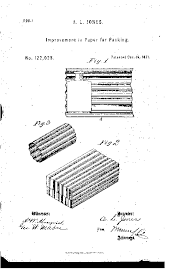
With the end of the current year and the start of a new one fast approaching, the gifting season is just around the corner. Within no time, we will be sending items and receiving them from our near and dear ones. Chances are, in most of these cases, they would have arrived in cardboard packages.
Cardboard, known as corrugated paper in the industry, is a packaging material that is made from layers of thick paper. If you have ever stopped to look at these boxes closely, rather than just what came within them, you would have noticed that the top layer of the corrugated paper is alternately grooved and ridged. It is this design that gives it its added strength and rigidity, making it an ideal material for the purpose for which it is now put to use.
Pleats and popularity
Even though its most common use now is as a packaging material, cardboard existed for centuries before, being put into an odd range of purposes. This is because it wasn’t until the pleated design that we just described came into existence that it really rose in popularity.
It was in the 19th Century that this design made its way, first to be used as liners in tall hats. It was a New Yorker named Albert L. Jones who first suggested that a sheet of paper lined on one side with another layer of pleated paper could be used for packaging.
Like many great inventions with humble beginnings, one of the most important aspects of modern e-commerce can be traced back to a simple patent. In a patent titled “Improvement in paper for packing” that he received on December 19, 1871, Jones delineated his ideas that turned out to be a cornerstone for the packaging industry.
While Jones primarily suggested his invention as a “means of securely packing vials and bottles”, he was clear at the outset that he didn’t want it to be confined to just that and that it “may be used to advantage for various purposes”.
Jones’ bold predictions
Jones, who applied for his patent on November 1, 1871, was quick to identify that the design that he was proposing was far superior to anything available then for packaging. He was aware that his corrugated paper was “more effective to prevent breaking than many thicknesses of the same material would be if in a smooth state like ordinary packing-paper.”
Jones didn’t stop just there and even went a step further, adding in his patent that instead of merely “wrapping the vials or bottles with the corrugated material, the latter may be made into packing-boxes”. He believed that such boxes would afford added protection to the product inside as they were now surrounded on all sides by this material.
Extremely commonplace
Just as Jones had predicted, packaging boxes were made out of corrugated paper by the end of the 19th Century. First used as a packaging material for breakable products such as glass and pottery, it soon became evident that it offered significant advantages and can be extended to literally any item.
That is exactly how it panned out by the middle of the 20th Century as it became cheap enough to meet any requirement. From packing fruits and fresh produce to boxing industrial shipments travelling across continents, corrugated cardboard has now become the go-to material for all our packaging needs.
Picture Credit : Google




